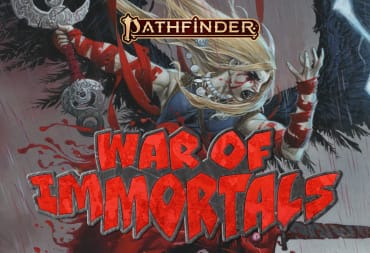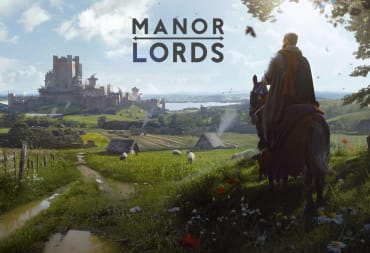Space exploration and colonialist expansion—two themes that are prevalent in the 4X genre of board games, and while many excellent games have used those themes in the past, March of the Ants chooses to explore, expand, exploit, and exterminate on an entirely different, and tiny, level.
What is March of the Ants?
March of the Ants places each player in control of a colony of ants, competing to gain the most Colony Points over the course of the game. Players will send their ants out into the Meadow in order to control territory, complete Colony Goals, Evolve into deadlier and more efficient ant species, procure food sources, and fight each other for control of territory.
The influence of other 4x games, especially those set in space, is very apparent in March of the Ants. The Meadow hexes could easily be swapped with galaxies, the ant cubes could easily be spaceships, and the ant Evolutions are obviously a tech tree, albeit a random one. With these influences comes the thought that the game could probably work just as well with a different theme. While that may be the case, the ant colony theme fits the game wonderfully.
The theme of the game allows much of the bloat of other 4x games to be distilled down into a game that makes sense thematically, gives the sense of a full 4x experience, and yet plays in under two hours. While the aforementioned bloat is actually a big appeal of certain grandiose space-opera 4x games, it also turns just as many people off due to the sheer length of time that those games can take.
March of the Ants - Resource Management and Cards
Resource management is woven into each action that players can take. Players must carefully manage their food and larva production against their need to feed ants deployed onto the Meadow. Additionally, players need to carefully decide how and when to play cards drawn from the game's deck.
The cards contained in the deck have various uses. Colony Goals provide alternative goals for players to achieve in order to gain Colony Points while Event cards give players the option to use powerful one-shot abilities that can affect the entire game board and all players. The Evolution cards are the game's technology tree and allow players to permanently alter their ants and gain special abilities that can help in combat, movement and exploration, and resource gathering and efficiency. Additionally, each card plays double duty while in a player's hand in that the cards can be used to bolster military strength if battle does break out between players, or if a non-player Centipede shows up in the Meadow. The need to balance potential military strength against the benefits of playing cards adds a layer of depth and meaningful choice to the game that tends to balance out really well.
Players who want to try to push their weight around militarily will have to forgo playing cards that will give them long term benefits in the hopes of bolstering their might during fights, while players who play cards intelligently may be able to gain enough Colony Points via alternate routes that military action is unnecessary on their path to victory. The fact that the cards are drawn at random does mean that players cannot entirely plan their strategy from the very beginning of the game, but the flexibility of being able to play the cards that are drawn in different ways is a nice compromise.
The juxtaposition of the epic feeling of the gameplay combined with the tiny stage on which it all unfolds is really fun to experience. Instead of far off galaxies, planets, and war machines, March of the Ants puts the focus on a battle that could, and probably is, taking place in your back yard even as you play.
A Few Notes on March of the Ants
A note on asymmetry
Four of the Colony mats in March of the Ants have a "generic" side and a side that shows a specific type of ant. The specific sides are asymmetric and give each player unique abilities, actions, or rules. I'm normally a fan of asymmetry in games, but I actually prefer to play with the generic side of the mats. Personal preference aside, it is great to have the option to play with either side and it most certainly increases the already great replay potential of March of the Ants.
A Note on Solo/Cooperative Play
March of the Ants features a solo/cooperative play mode in which the player(s) attempt to combat an encroaching army of Centipedes. While the game mode works, it doesn't have the meat and crunch that the regular, competitive mode has. Instead of playing against and off of your opponents, it turns the game into more of a race against the clock. Strategy and planning become less important than the ability to react quickly, which plays away from the game's strengths instead them.
A Note on “Chrome”
The art and components in March of the Ants are all really nice. The cards and cardstock are good quality, and the art gives the game a more whimsical, lighthearted feeling than the typical space or colonial-themed 4x game. March of the Ants' rulebook is well-written and makes learning the game and referencing rules during play very easy.
Is March of the Ants Worth Your Money?
March of the Ants contains just about everything a great 4x game has and uses the ant colony theme to distill it down into a tight, thematic, and fun experience with a manageable playtime. A game of March of the Ants won't take all day to play, and yet it still manages to feel like a grand strategy game. Each disparate piece of the game is successfully woven together to form a cohesive whole that should delight fans of the 4x genre who are looking for a relatively quick-playing game with a unique theme.
The copy of March of the Ants used in this review was provided by Weird City Games. This review was originally published on 11-10-2015. While care has been taken to update the piece to reflect our modern style guidelines, some of the information may be out of date. We've left pieces like this as they were to reflect the original authors' opinions, and for historical context.
Review Summary
Have a tip, or want to point out something we missed? Leave a Comment or e-mail us at tips@techraptor.net













